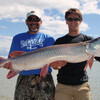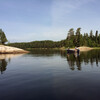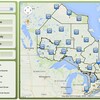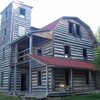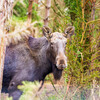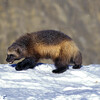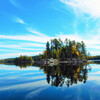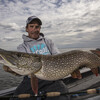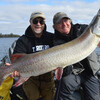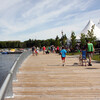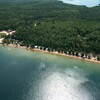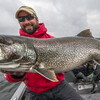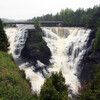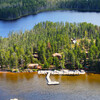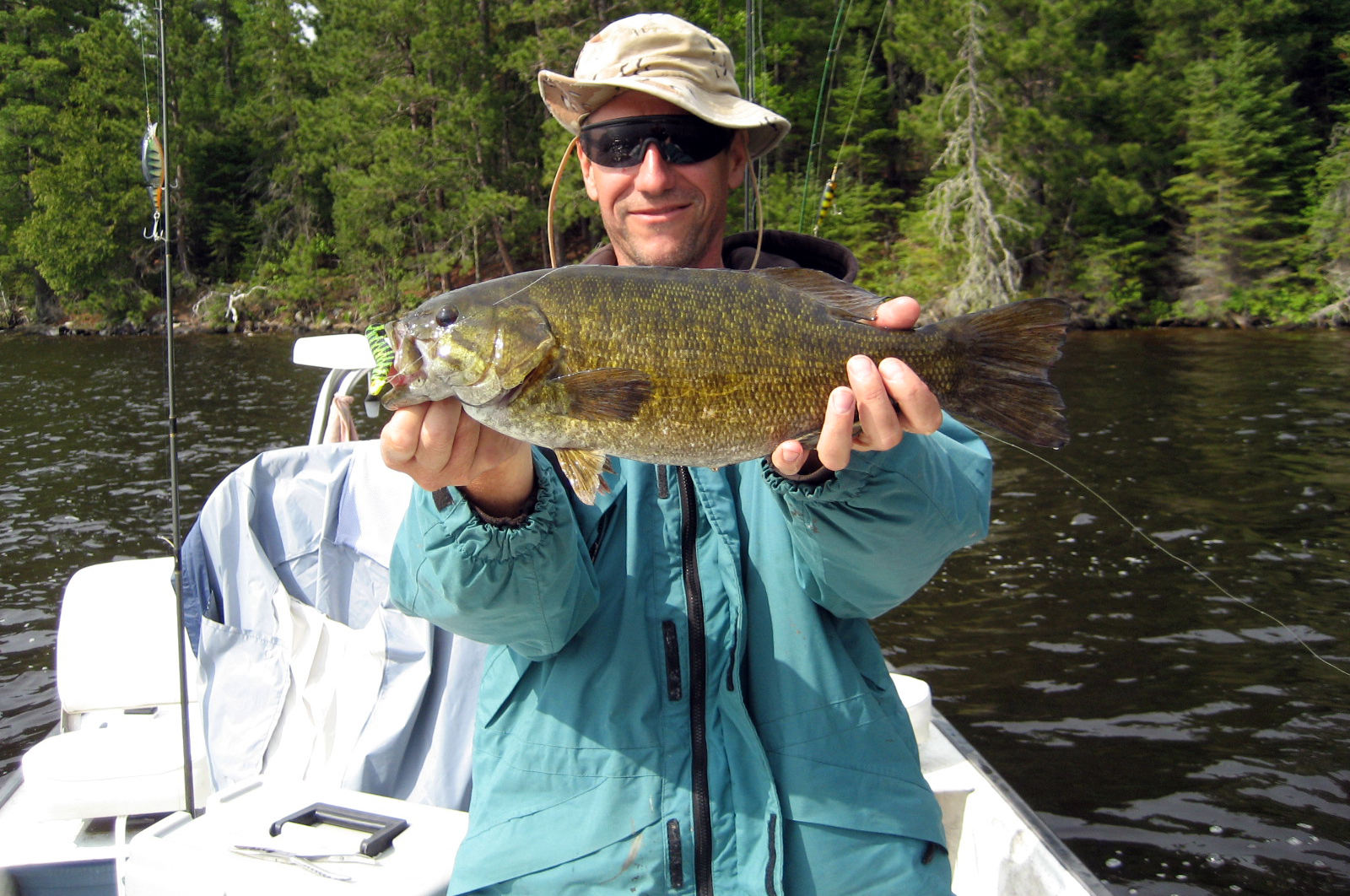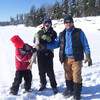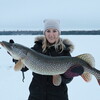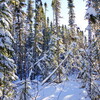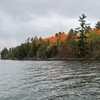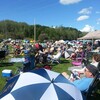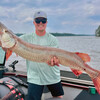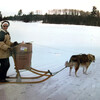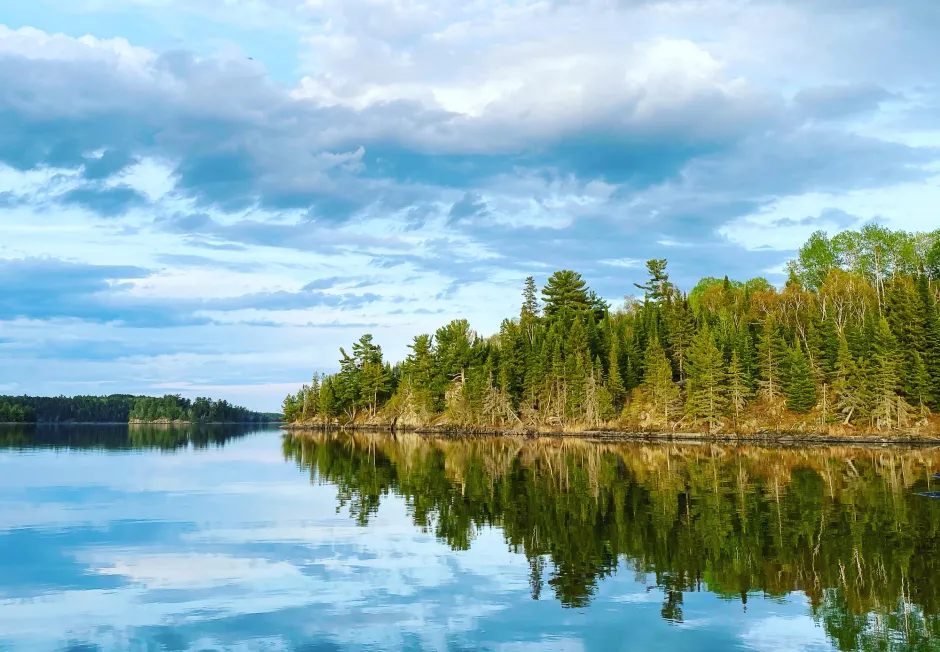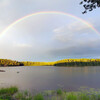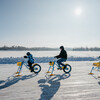
The fun never ends when fly fishing for smallmouth bass!
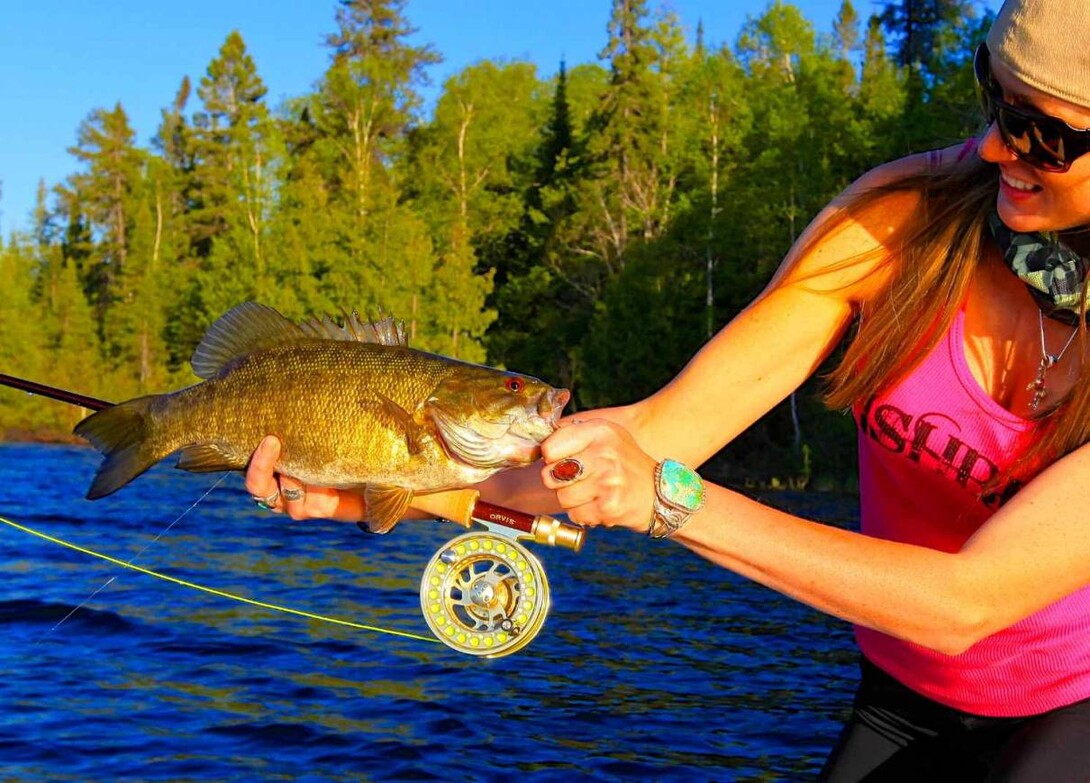
Of all the places I've fished in the world, I'm proud to say my favourite is also my home. Northwest Ontario is a gorgeous spread of land with thousands of natural clean, clear lakes, rivers, and streams that are hard to beat when it comes to fishing. No matter what the season, Northern Ontario will capture any fisherman's attention, boasting amazing fisheries with trophy fish being common. Its fishing will rival any other sport fishing in the world.
Renowned for its wide variety of species of fish, one, in particular, is highly acclaimed for fun on the fly rod—the popular smallmouth bass. It is a freshwater species in the sunfish family that is native to North America. Pound for pound this mighty fish can hit a fly like a heat-seeking missile. Their body shape makes them harder to fight—even the smaller ones can fool you into thinking you have a trophy on the line. My ultimate favourite is when they explode out of the water shaking their head when hooked. It amazes me every time—I never get tired of seeing that!!
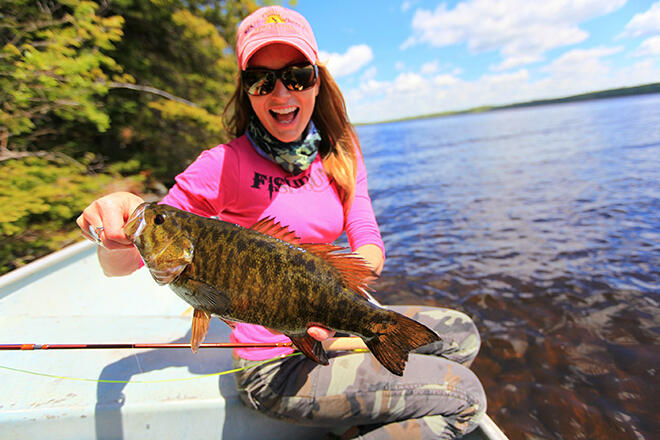
Smallmouth bass rank at the top of my list for an overall favourite sport fish. I suppose it's because it was the first fish I caught on the fly rod. Most of Northwest Ontario has excellent fly fishing for smallmouth bass with public access. But if you are looking for a drive-to or fly-in location, here are some of my recommendations:
Slippery Winds Lodge
Fireside Lodge
Hawk Lake Lodge
Pine Cliff Lodge
Merkel's Camp
Finding where they are:
The key is to anticipate any potential location that the fish will use as a surprise attack on its prey. My personal favourite is a half-submerged fallen tree or a log, a boathouse or dock. Basically, anything that offers coverage. Try fishing the shadows. Bass typically choose shade over sunny spots. In a lake, they actively seek out harder bottoms and cooler, clearer water, as they are visual predators. The drop-off rocky points and large underwater rocks are the classic structures to seek. If fly fishing a river, bass act a lot like trout, staying right near the fastest current. The current that breaks next to still water with deep holes are places to find river bass. Good fishing is to be had all day long in this faster water.
Casting and stripping and setting:
You don't need to make long casts—20 to 30-foot casts are good enough. Once you've cast your fly to the desired location, you'll start to strip the line in at a multitude of speeds. Shorter strips to longer strips, even some short burst strips to really make the fly move. Allow it to rest motionless, let it sink, or begin to animate and retrieve it again. Twitch and pause it. What you are doing is animating the fly! By using a multitude of different speeds along with pauses you are enhancing the opportunity of the strike. Experiment with these speeds to see what works.
Keep your rod tip low. Be sure to keep your line tight, no slack in that line! This will help keep your fly lifelike and you will be in control if the fish strikes.
The best way to set the hook is with the strip strike, simply keep your rod low and pull the line tight, this sets the hook beautifully on bass. When you see or feel the take, react quickly with your rod tip still low and pointing at the fly, pulling the line tight. This tightens the fly line and leader against the hook and fish. The quicker you reel up the slack in the line, the fewer issues you will have with loose line and you can get the fish on the reel, once that is accomplished you're on the way to landing your bass. Get the net ready!
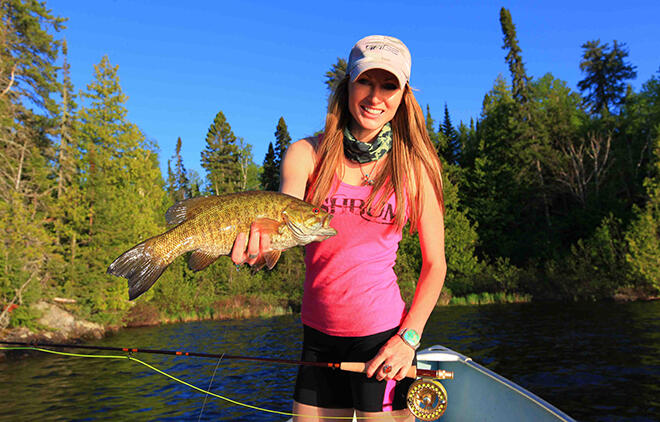
Quick tips:
Fish with no barbs! Not only is this healthy for the catch and release of your fish it's also a safety factor! Hooks come out easily with no barb, so pinch the barb down for quick and easy removal from your bass. That way, it can be released unharmed. Barbless hooks are also easier to remove if you accidentally stick yourself. This is also a must when you're fishing with young anglers. Aside from safety, using barbless hooks also teaches children that live release is essential for the healthy future of the fish population.
Proper fish handling is important.
Although catch and release angling is a valuable conservation tool that can lead to the higher population in the fisheries, just because the fish swims away does not always mean it lives on. These quick and essential tips can increase the chance that your bass (and any other fish you catch) will survive after you release it.
Fight time: Try to land your bass as quickly as possible and don't play it to exhaustion. This is particularly important when fishing in periods of warmer water temperatures. Shorten fight times to increase survival because a fish angled to exhaustion is more vulnerable to predators such as birds of prey, and other fish.
Handling: Excessive handling can cause physical damage to bass. Be gentle. Wet your hands prior to touching the fish. Make sure they are clean and free of sunblock, etc. If using a net, it should be soft rubber or coated mesh net.
Quick photo op: As a photographer, I make sure my camera settings are ready and on "rapid-fire". Everything is ready before the fish comes out of the water for a quick photo. I like to see water dripping off the fish in photos—that typically tells me it has not been held for very long out of water. Remember! Don't touch the gills, never put your fingers into the gill slits, this is a for sure no-no if you're wanting to do catch and release. Fish gill filaments are very sensitive and can easily be injured. Fish should be handled by cradling the fish near the head and tail if possible. Bass can be safely handled by holding the lower jaw, thumb in the mouth, and forefinger under the chin aka "lipping", this will keep the fish safe and secure.
A quick tip: How long can you keep a fish out of water? Hold your own breath and that will be about the same amount of time. When you need to breathe, that fish must be returned to the water.
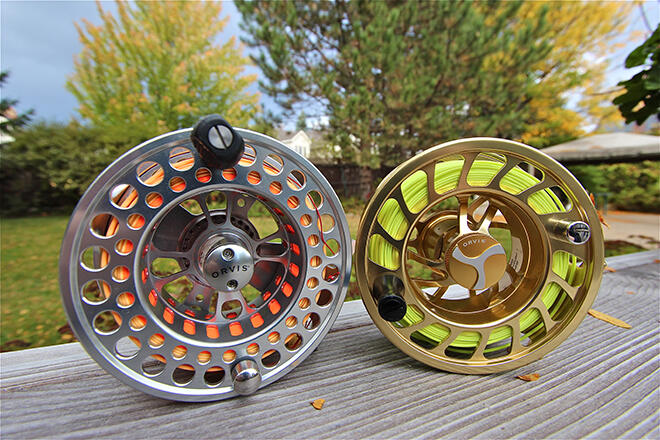
Equipment - What to use?
It doesn't cost much to get the right equipment for bass fly fishing. You need a basic inexpensive fly rod, line, leader, and flies. Allow me to divulge a bit more. The rod: 6 weight to a 7 weight is great for smallmouth bass fishing, both are strong enough to turn over the flies needed. An 8-weight will be good for smallmouth bass and largemouth. Fast action is preferred.
Reel:
The best reel is one that has a smooth disc drag system with a large arbor.
Line: A weighted forward floating line matching the rod weight. Sinking lines are ideal for the later season (mid-summer/ fall) lake fishing to get the fly down to the fish.
Leader:
For ease, you can use a knotless tapered leader. 9-foot leader 8-10 lbs test. You can go up to a 14 lbs test if your fishing logs and structure that the line can get caught on, a stronger line will help prevent the bass from breaking you off.
A quick tip: If you want to know the approximate strength (test strength) of a tippet, subtract the X number from 9 to get the strength of the tippet! Bass are opportunistic and typically attack anything that looks alive and edible, this makes bass a perfect fish for fly fishing. Flies are easy to select for bass. You're basically imitating what the bass eat. This is everything from mice, frogs, insects, and crayfish to bait fish, and much more. I have put together a list of some (not all) of the best bass flies to use, and they are:
Top water: Popping bugs (poppers), hoppers, Sneaky pete slider, deer hair frog, and mouse pattern.
Subsurface: Crayfish pattern (crayfish is the #1 preferred food by bass), bucktail streamers, zonkers, leech pattern, Clousers Minnow, black woolly buggar (a very successful bass fly). Trout dry flies can be used as well: from sizes 8 to 12: Olive Elk-Hair Caddis, Damselflies, Mayflies, light humpy fly. These are very popular flies and should be available at any fly shop.
With this information, you should be well on your way to the enjoyment of catching smallmouth bass on a fly in Sunset Country. The mecca of wilderness bass fishing! Tight lines <'))<<
Recommended Articles
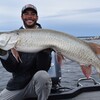
Looking for somewhere new to fish?

Has not having a passport kept you from vacationing in Canada?
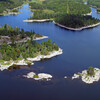
Discover The Winnipeg River

A Guide to Sunset Country Museums
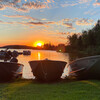
Going fishing in Ontario?
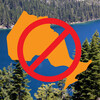
10 Reasons to Avoid Ontario
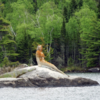
The 5 Best Sights you can only see by boat
5 Essential Boreal Experiences in Ontario's Sunset Country
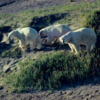
5 Obscure Facts About Northwestern Ontario: Were You Aware of These?
Outdoor Medicine
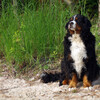
Bringing Your Pet to Canada
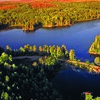
Heading Across Canada?
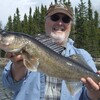
Tips for Spring Walleye Fishing
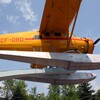
There's more than just fishing in the Red Lake Region
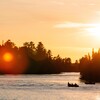
Outdoor Adventure in Ontario's Northern Paradise
Plan your trip
5 Amazing Things About Spring
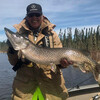
Spring Fishing for Northern Pike
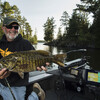
Tips from a Fishing Legend
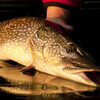
Going Fishing in Canada?
